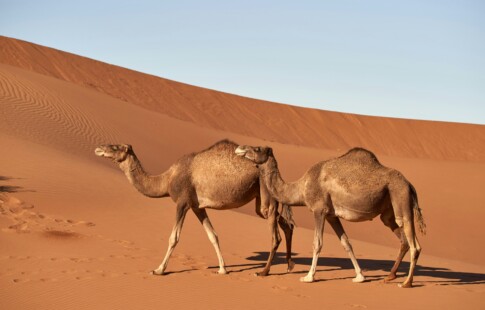
The Effects of Cruise Ship Waste
We are reader-supported. When you buy through links on our site, we may earn affiliate commission.
The cruise industry generates billions of dollars annually and supports global tourism. Cruise lines allow individuals to experience multiple cultures and topographies in a short period. They also help tourists support less developed nations’ economies during their stops.
Environmentalists recognize the pros and cons of cruise lines, especially relating to aquatic ecosystems. The line of tourism introduces passengers to new marine species and systems while producing harmful waste. Cruise ship waste creates ecological degradation and requires industry-wide sustainability changes to enhance environmental conservation.
What is Cruise Ship Waste?
Cruise ship waste is pollution deriving from large tourism boats. Some environmentalists refer to the ships as floating cities because of their vast pollution problems. Cruise ship pollution ranges from oil bilge to solid waste.
When the pollution reaches the ocean, it adversely impacts marine ecosystems. There are global regulations prohibiting illegal dumping and runoff from cruise ships to protect the environment. Many organizations fail to comply and release toxins into the water illegally.
The Carnival cruise line plead guilt to multiple marine degrading charges in 2019. It released wastewater, plastics and other toxins into the water and acquired a $20 million fine. The penalty charge money supports aquatic cleanup programs, which repair pollution-derived damage.
Another source of marine degradation comes from debris pollution. Large vessels stir up sediment with their engines and smother coral reefs. There are four major causes of cruise ship waste causing global ecological degradation.
Oil Pollution
From 2005 to 2013, the Princess cruise line released black oil from engine waste into the ocean. The ships released nearly 4,000 gallons of toxic pollution off England’s coast. Princess acquired a $40 million fine for the illegal dumping because of related environmental damage.
Oil waste directly affects birds, fish and shellfish. When birds swim in oil-contaminated waters, they experience insulation degradation. Oil destroys animals’ fur and limits their ability to protect themselves.
The cruise ship waste also adversely impacts fish and shellfish when digested. Oil can change a marine species’ reproduction abilities and cause death. Other ships allow plastic waste to reach the ocean and create harmful impacts.
Microplastic Runoff
Many cruise lines rely on single-use plastics for dining to limit water use. Workers transport used plastic straws, utensils, cups and more to a holding room. During the transportation process, careless handling practices allow waste to blow into the ocean.
When plastic degrades in the water, it becomes minuscule beads called microplastics. Marine species often mistake microplastics for food and ingest the toxins. After ingestion, species experience growth stunting, reproductive system disruption, limited appetites, liver damage and tissue inflammation.
Plastic pollution also works its way up the food chain and enters humans’ bodies. There are various harmful chemicals in the waste that adversely impact human health. Another form of pollution produced by cruise ships is food waste.
Food Waste
Environmental researchers calculated food waste production on cruise lines. They found waste can reach up to 30% of a ship’s food supply. The pollution form contributes to secondhand emissions.
The agricultural industry produces toxic surface-level and atmospheric waste. Raising cattle for beef production contributes to methane emissions. Growing mass quantities of fruits and vegetables often create harmful runoff.
Many farmers use synthetic fertilizers and pesticides to grow enough food to support cruise passengers throughout their trips. When it rains, stormwater carries additives off a farm and into the ocean. The runoff creates algal blooms in the water, which depletes local oxygen levels.
When cruise lines waste food instead of accurately calculating necessary consumption rates, they promote over-farming. The overproduction of food increases eutrophication and minimizes global environmental sustainability. Another form of cruise ship waste is air pollution.
Air Pollution
Most cruise ship engines run on diesel, which is a fossil fuel. The vessels contribute to about 24% of transportation emissions globally. During the combustion phase, ships release greenhouse gas emissions into the atmosphere.
As the gases accumulate in the environment, they limit Earth’s ability to regulate surface temperatures. Emissions overproduce atmospheric heat and cause climate change. Environmental engineers and scientists are searching for waste reduction methods to improve the sustainability of cruise ships.
Cruise Ship Waste Reduction Techniques
One solution to air and oil pollution is solar power. Multiple engineers are developing vessels powered by renewable energy, which eliminates the demand for fossil fuels. Larger boats like cruise ships benefit from solar energy because they have enough surface space to support electricity production.
Another way to reduce waste is by using reusable dining materials. Cruise lines can also ban single-use plastics to minimize microplastic pollution. Minimal sustainability efforts can have maximum ecological outcomes in aquatic regions.
Holding Companies Responsible
After the Princess cruise line released pollution into the ocean off England’s coast, the country establish sustainability regulations. Many nations are recognizing the adverse effects of coastal pollution and developing laws to prevent further destruction. As more regions develop regulations, cruise lines must adopt sustainability practices to prevent fines.
Share on
Like what you read? Join other Environment.co readers!
Get the latest updates on our planet by subscribing to the Environment.co newsletter!
About the author

Jane Marsh
Starting from an early age, Jane Marsh loved all animals and became a budding environmentalist. Now, Jane works as the Editor-in-Chief of Environment.co where she covers topics related to climate policy, renewable energy, the food industry, and more.





